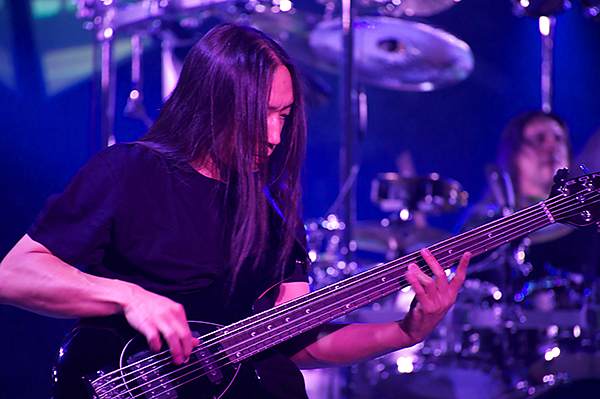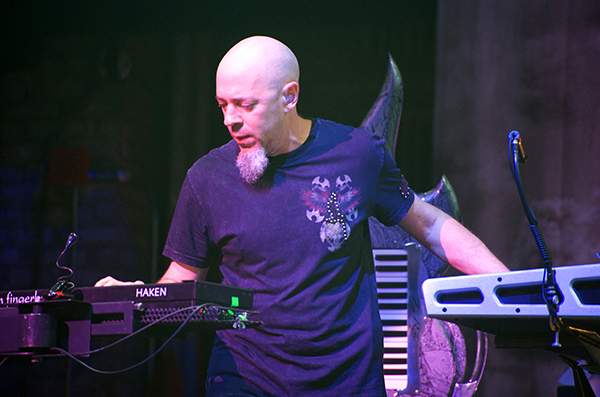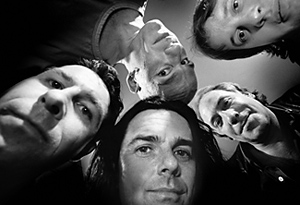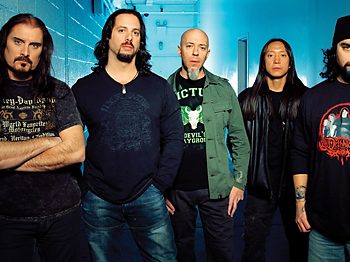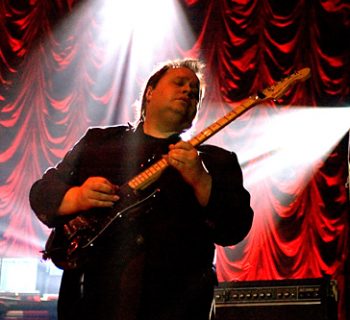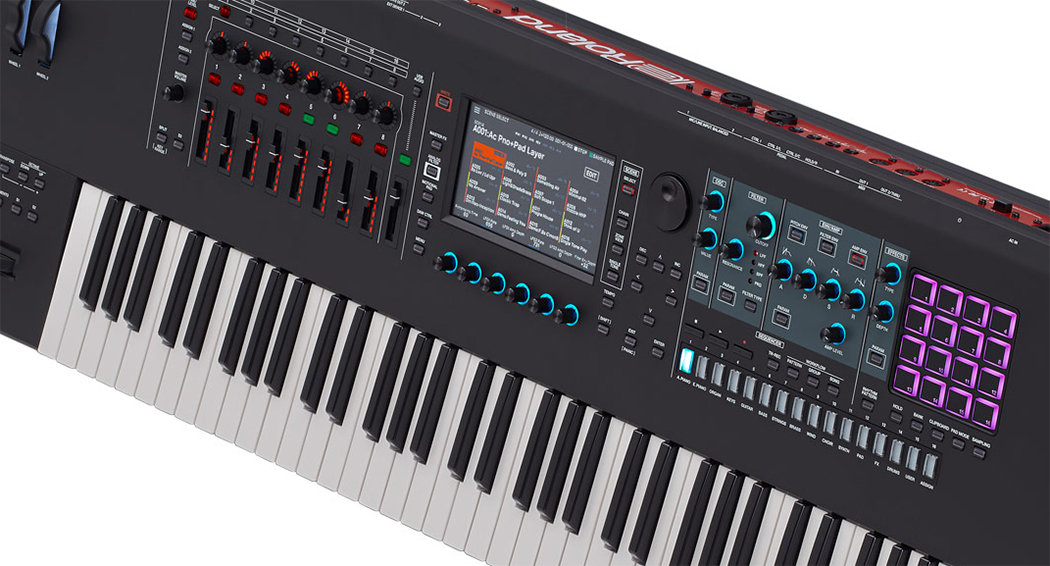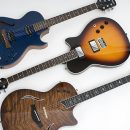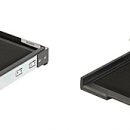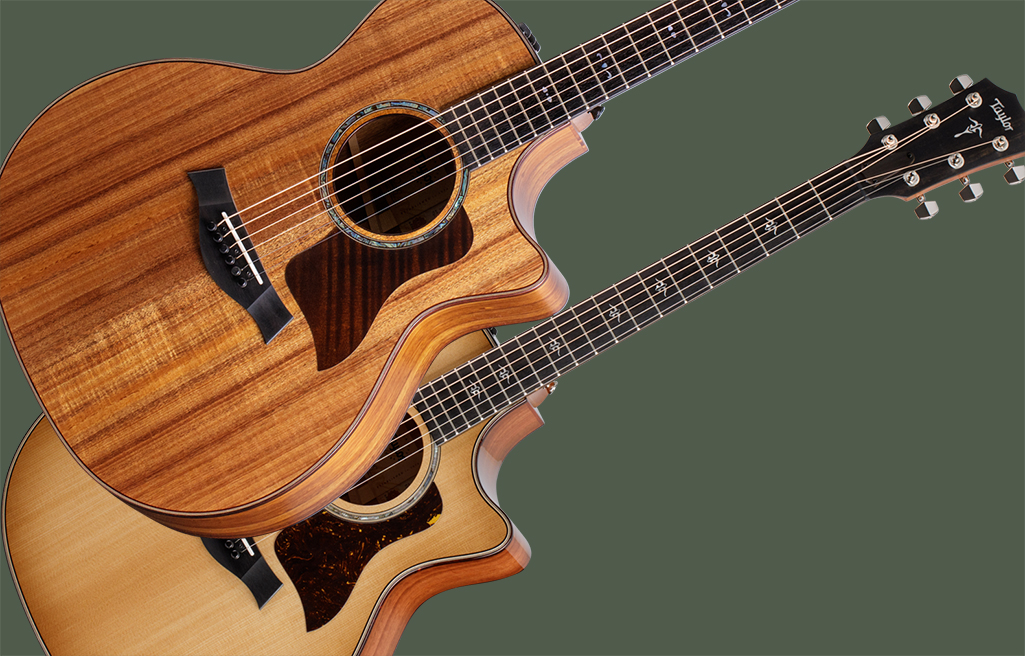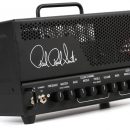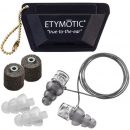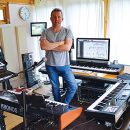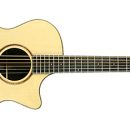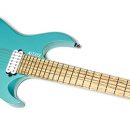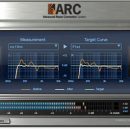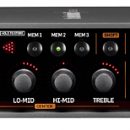Throughout the decades, Dream Theater co-founder and bassist extraordinaire, John Myung, has dazzled the musical community with his command of the bass guitar. Playing all forms of the electric bass, and taking six-string bass playing into previously uncharted rock and metal territories, Myung has never been one to demand the spotlight or fan adoration. To see and feel him play the bass on stage, however, is to see a musician achieving that awesome, spiritual connection to the music that escapes so many players who have the chops but haven’t figured out how to play in the moment.
Myung is, of course, worthy of all the praise bestowed upon him, yet he remains the ever-humble servant who plays a critical role in defining the sound of his band. We had a fantastic time talking about getting to know more about the man, the myth, and the basses.
"There's no shortage of ideas.
There's always plenty of things to work on."
MPc: You started out playing violin. What drew you to the bass guitar?
JM: My friends were all very, very into music and, they were just forming bands. A friend of mine, who lived two doors down, Frank [Gilcrest], was a drummer and he was looking for a bass player and it was something that I just sort of fell into. Originally I brought my violin down and it just didn’t seem right, wasn’t loud enough, and then a bass was brought up and I thought it was a neat thing to try, and I absolutely loved it. It just really clicked with me, and from there it just became a very big part of my life and it was all I wanted to do. You know it was a lot of after school, just jamming on covers, and just being, just kind of hanging out with my friends and talking about Rush and Sabbath and Yes and bands like that, hanging out, listening to tracks.
John was in a different part of the neighborhood, involved with a group of musicians in his area, and they were forming a band and another friend of mine was also forming a band, so there was like a lot of—I don’t know what sparked it, I think it might have been just one day someone’s parents decided that it would be a good idea to get their kids some guitars and amps and things like that, and before you knew it, it just became the coolest thing. And that’s kind of how I got brought into that whole world. It just became a very big part of my day once that happened.
MPc: Tell me about your role in the song-writing process with Dream Theater.
JM: I see my role as sort of just listening and taking in ideas, and being able to add to them or compliment them, and also to try to work on something that is basically strong enough to spark a song. I’m always searching for that, and usually there’s like one or two ideas that are sparked during the session that wind up sparking songs. One of them turned out being “Behind the Veil.” Just, you know, like a verse groove. I’m just working on something, just jamming with Mangini, and at first I didn’t really know what I was doing, and then we figured out what it was and, determined that okay, this will be the grove, and then the release part of it, was also just sort of a jam that I was just jamming with John and [Mangini], just working on stuff. I think Jordan had something to do that day, and we were just jamming and it just hits me, it hits me like a bolt of lightening. I’m just, I’m always waiting for that to happen. And then just starting playing… the riff that sort of appears towards the latter half of the song, which was originally earlier, but things get altered in the process. And we recorded it and it was great, everyone was really into it.
So that’s one way that… that is sort of my approach in terms of, when I feel I can… when I feel good about being in a studio, when I can come up with things that, to me, are of the moment, and it gets captured, and it’s strong enough to be on a record. That’s one aspect of it. And the other aspect is just trading ideas and determining what we’re going to work on with the band. You know, everyone—there’s no shortage of ideas. There’s always plenty of things to work on. But you kind of go back and forth a little bit on what we can work on and there are some things you decide that you’re gonna’ work on, but you never wind up working on [laughs]. So it’s a bit of like, you know, going with the flow and sort of trading ideas back and forth and once you finally get where this thing is going, I just try to be inspired and come up with stuff—more building blocks to facilitate the process [and] direction.
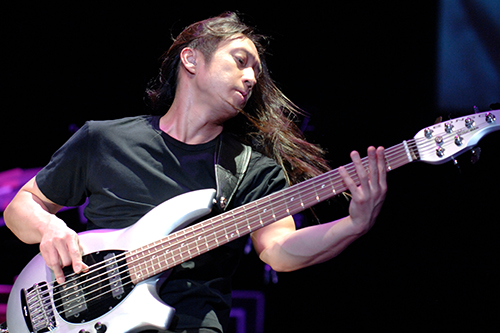
MPc: A lot of players wonder, how did you make the leap from a four-string bass to six? And did you stop at all along the way at the five-string?
JM: The way I saw it was, I always had the four-string if I wanted the four-string, because it was just the [middle] four strings. And in a lot of ways it was actually easier because if you’re just gonna’ play something off the E, now you have a string underneath to play off, like a backboard, sort of like a backstop, to the strings. So the way I saw it, it just complimented the four-string. In the beginning I just thought of it still as a four string and so the added string is just, you know, the obvious extension of the range and the shape.
The shape was very much seen in the four-string concept, and then the extra two strings sort of made the shape just a little bit wider. And, so that’s the way I saw it, it was a real sort of simplistic view of it. It wasn’t complicated. I like it when things can relate and I saw the relation to the shapes just being bigger and just having a little bit more voice and capability. And it just seemed like it was a nice compliment to the four-string, having the extra strings, in terms of just being able to come up with different types of songs, different types of parts and things, like harmonics and shadows, because of the range of a six-string bass, cool tapping parts, and just being able to play really super-long notes, too, to kind of fill things out when appropriate, to kind of give the songs that low-end volume. It wasn’t really that difficult the way I was feeling it.
"He did something that I wouldn't normally do,
and it wound up making a world of a difference for me."
MPc: On your Music Man Bongo bass, I understand the neck on yours is not the typical Bongo neck for a six string. Can you tell me a little bit about your guitar?
JM: Sure, well, the thing that’s different about what I’m playing is basically: originally I started playing the [stock] five-string Bongo, as is, on Systematic Chaos, and that was great, but it just seemed like the body was too small, and I was used to playing the six string, but we were in the process of developing a six-string during that tour. The relevant thing to do at the time was, ok, let’s just increase the body mass and continue with the five-string string spacing and use that calibration in terms of where the next higher string is going to go. And that was cool for a while, but it just started getting to the point on tour where I felt like my hands are telling me something. Every night they were just sort of burning and they felt just really tense and my hands were telling me: listen, we need to make changes to this instrument, because it sounds great and definitely has a place, for a certain type of song, but in terms of what I was playing night after night on tour, I needed something that had a little more chemistry with just the overall relationship of the guitar to my body.
So what I decided to do was go back to the five-string spacing and superimpose a six strings on that while maintaining the six-string body. And that worked for a while, but then there was, sort of, stability issues with just the way the original cut of the neck and the way it fits with the body and the way that the strings sat. It was like I couldn’t leverage enough power from my left hand. There wasn’t enough… the shape of the curve in the back wasn’t right in terms of being able to get power from my thumb and leverage my hand that way. And it felt like the only way I could get power was from my palms. My palm supporting the back of the neck, and I was playing and [thinking], you know, my thumb really has to be part of this.
So then the neck dimension became an issue. And then I decided to go with sort of a flatter curve, and I decided to take the paint away [from the neck] and go with more of a natural wood feel. And we nailed it. There’s something about the way it just sits now and the way the strings rest on the bass that’s comfortable doesn’t get in the way, and plays really well. So without too much experimenting we kind of nailed it right off the bat, in terms of just getting the curvature of the back of the neck a little bit more flat and a little bit more mass in the back, a little bit more substance so that it wasn’t phasing out my thumbs. The circumference of the back was a little bit too narrow where I felt like my arms couldn’t really find a place to position properly. So basically what we did, we had to flatten it out so that the thumb could comfortably rest behind the fret board. And once that started happening, the technique and the playing and everything started flowing a little bit better. And that’s the thing: it just sounds a lot better because everything’s relative, but if it’s more comfortable for you to play it’s going to translate and be more comfortable as far as the musical instrument, and the performance will sound that way too.
And that really only came together within the past year and a half. I only had one such model during the last tour and basically going into the studio it was that, and basically the same version of [that] but a different pickup configuration, which was to add a little bit of variety, tonal variety, to the album. So, the main one I had [was] the HS pickup configuration, the hum and the single.
MPc: And which pickups do you use?
JM: They’re Music Man pickups. It’s the way they wind at the factory there. And… the addition [to my latest bass] was the double hum, which was really, really cool sounding. I had a rig so that there’s not a whole lot of editing on the bass… basically on my HS it’s just a volume knob and that’s it. It’s just basically everything’s sort of straight up (that’s with the HS sound). Any sort of sound editing, I’ll shape it [from] my pre-amp. The difference with the double hum—the HH bongo, is that I asked them to instead of just having a volume knob, to also a have a pickup selector knob where you can have four different settings. I know the position of the knob but I’m not sure what’s going on in terms of the polarity of the pickups. But I found this really cool sound that totally has that sort of vintage under type of sound that I love, and wound up using that for songs like, “Along for the Ride” and “Illumination Theory.” Songs like “Surrender to Reason,” that was the HS.
So you know, I’d say… I think it wound up being, like, half the record with the HS and half with HH. So I thought was a really kind of cool way to add dimension to the record.
THE GEAR
MPc: Let's talk about your bass gear, in terms of the amps. Historically, you've had some big Mesa/Boogie rigs and then you've also done some touring with Studio Preamps and going direct. What do you like about the different approaches, and what did you settle on for the new record and the upcoming tour?
JM: That’s a really good question, because… you know, it’s a combination of a lot of strong elements. But just because you have a bunch of strong elements doesn’t mean it’s going to work well together. The work is finding what these elements are that you want to boil down to, and it’s usually three or four, and finding a way for them to incorporate and work well as one sound. One of the really cool things about this record was Rich Chycki was working with me on my sound and he did something that I wouldn’t normally do, and it wound up making a world of a difference for me.
He added a couple of foot pedals before my preamp, which were a Mesa/Boogie Grid Slammer and a MXR bass compressor. After he did that, it totally just, it added this element that for me had been missing. I always used to mess with pedals and come up with sounds and it would sound good for about a half hour and something would eventually blow up or overheat or something would go wrong.
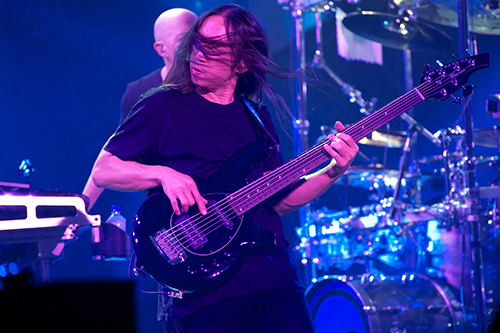
Dream Theater at the Mayo Performing Arts Center in Morristown, NJ
So with the gear that I have a lot of it is just high-end studio quality gear. One of the most useable parts of the rig, that’s sort of the foundation, is the Demeter valve pre. It’s the VTM-2B—it’s just this legendary valve pre made by James Demeter that was actually used on Michael Jackson’s Thriller album when they were recording it. And he’s not just saying that, I believe him because when I hear the Thriller album and I hear the bass it sounds exactly like that valve pre; it sounds like a Music Man going to a valve pre, and that’s exactly the way it sounds. It’s just this really round, functional sound. You hear it, you feel it, it’s just sitting really, really well. And that’s sort of the challenge with getting all these sounds to work together—getting everything to sit well in a complimentary way where it’s actually creating something that’s really strong. Sometimes you can in theory say I’m blending all these things together so it has to be strong, but you know a lot of times it’s not strong, it’s just a bunch of nothing. So the valve pre was a really great addition to my sound.
But there’s also other things that I’ve learned. I mean, you learn something every album. The one thing I’ve learned with Rich is it’s cool to experiment with these pedals and put ‘em basically wherever you think they should go, as long as you think it sounds good. But the key thing is just to make sure that everything is line level and the signal going into it is even with the signal that’s coming out of it.
So once you have that sort of ratio set you’re not really damaging or hurting anything, it’s just creative color. So anyway, those two things sort of made all the difference on this record, apart with everything else that was going on which was you know another dynamic part of the rig comes from using a mono block, an eight tube mono block power amp which is also a Demeter piece, going through a Radial JDX which is sort of the ultimate, to me, the ultimate DI sound, but it’s very dynamic at the same time. So you get that kind of cutting edge, direct signal, but it breathes, and it breathes because of the tube aspect, the mono block tube aspect. I think it’s VHTF-300.
Everything is just a creative process. It’s just sort of finding the right combination of things that work well together. And all of that just made for a lively bass sound and when I hear it, it’s great. I think it’s one of the best sounds I’ve had on a record, ever.
MPc: I noticed in the parts where—I don't necessarily call it taking a solo, but there are a lot of parts where there are lead lines, there are bass lines that come out on their own. And I tend to notice a flanger or similar of type effect on your bass. And I'm wondering if you can talk a little bit about your use of any effects on your bass signal.
JM: Oh, are you talking about, for like “Enigma Machine?” Yeah, like…yeah well that was sort of tapping into the colors and things that Rush has done in the past, and you know it was always like, “Man, how do they get that sound? How do they do that?” And it was great because Rich was engineering the record and he’s great with sounds, and we tell him can you make this sound like this? And sort of like… we would reference like Rush albums and tonalities and stuff, so it was great having that resource.
That particular thing you hear is a Dimension D effect from Roland. That’s what gives it that flangery sort of stand out quality.
"They both have really unique qualities as drummers."
MPc: Live, you're using in-ear monitoring. I'm sure that the thought of in-ear monitoring has got to scare the heck out of many bass players, wondering how you can possibly have a good enough sound to hear and feel your bass. So can you tell me about your experience making the move to in-ears as a bassist?
JM: For me, it’s sort of like being in the studio. You get incredible fidelity in your ears. The challenge is getting the sound right, though, in the context of a big live show where there’s a ton of sound emitting below the stage and above the stage. And it just engulfs everything. It’s sort of this big ball of sound and it just permeates everything, permeates the mix, and it changes everything. So for me I keep it very basic. I try to leave a lot of space where I can hear my articulation and I can hear the other instruments—enough of the instruments so it can guide me through the song so I don’t lose my place in terms of where I am. How can I get through this song and have it sound good, once the PA is on and you have all this power [eminating] from the stage interfering with your mix? Kick, snare, and hat I always have to hear from the drums.
I tend to keep all the busier elements in the songs more in the background. I just have a real basic mix—kick, snare and hat, basic guitar, keys, not so much vocals. The vocals are cut back a little bit because the ambiance in the air that gets sucked in through the vocal mic sort of interferes with the quality of the mix, too.
It’s sort of like a survival mix. You know, okay, well I need it to sound good… the bass is usually the louder the element so that I can sense the articulation in the playing and know that it’s working. But that’s sorta’ the way it goes live. It’s a different world once the PA is on. I mean with the PA off it’s like being in the studio, you can have an album quality mix going on.
But, [in-ear monitoring] is actually not a bad thing. I know what you mean, bass players not wanting to go in-ear and stuff because you know you don’t get to play with the real bass amp behind you, and there are times I really miss that. But it’s actually better this way because you can control how much sound is getting into your ears, and it’s actually less brutal on your ears this way [laughs]. You can get a little bit more longevity out of your hearing as a result of in-ears.
MPc: Which in-ear monitors do you use?
JM: I use molds made by Sensaphonics. They're made from silicone. I found those to be the best for me because I've had problems with other bass in-ear things that were not silicone based, just issues with the way the material is created and everything, and for me I needed something that was very sort of neutral in toxicity. So the silicon is just a real sort of natural fit up against the skin and it fits right, so I've stuck with that for the longest time now.
THE LIVE SHOW
MPc: Now that you're about to embark on the second big tour with Mike Mangini behind the kit, you guys are the powerhouse rhythm section. Can you compare and contrast the differences playing with Mangini versus playing all the years with Portnoy?
JM: Um, well… you know, that's a real difficult answer without it being polarized. What I would say is that they're both really gifted people, in the way they construct their parts and the way they approach their drumming. And there's no right or wrong way when you play an instrument, you know, and it's just this is the way I do it. That's what's cool about it. So they both have really unique qualities as drummers. It's all expression and jelling as a band, and I'm just lucky enough to have the experience to play with the both drummers.
"It's those types of moments that I live for."
MPc: John Petrucci goes through a variety of warm-up exercises and his little regime every night before each show on tour. What's your pre-show or post-show process like?
JM: Well, you know… for me a big part of it is eliminating the physical barrier. And I think eliminating the physical barrier is a big relationship that you have with the instrument, whether it be, you know whatever the instrument it is that you play. You know, that first sort of threshold to get through is eliminating that physical barrier and that—the physical barrier for me is just having my brain and my hands totally in synch and the only way that happens is by playing.
I like to have at least a couple of hours before a show to just really kind of warm up slowly and do little exercises that sort of channel energy into my hands and stuff to the point where I just feel like I own my hands now. That sort of a thing, so that when you walk out on stage you know it’s all just about sort of going with the flow and being in the moment and not having to worry about the physicality part of it, because I’ve had time to warm up and to get to that point. So the big part of it is just really the physical aspect. It all has to do with the physical and mental state. Just how you prepare going into the show; it’s not just the hours you’re up on stage, it’s the whole day, it’s how you wake up, it’s what you have for breakfast. It’s what you do prior to show time, all of those things play into the moment that you are up on stage.
It’s like that before a live show for me and it’s like that also going into the studio, but then leaving it to the imagination, you know, kind of forgetting everything, and just going with your imagination vibe, that sort of thing, and trying to capture that spark, that spark that translates into a big song.
RETROSPECTIVE
MPc: Now we're going to do is a little retrospective, where I throw at you the name of a Dream Theater album, and I want you to tell me briefly the first story about that record that pops into your head related to either your song-writing process or your gear at the time. The whole idea is to see what spontaneous things come to your mind as we look back on things.
JM: Okay.
MPc: Let's start with Images and Words.
JM: Images and Words… Specter bass.
MPc: Okay, how about Awake?
JM: Awake, the first thing that comes to mind is the bass I played: Tung [a small company founded by a former Tobias luthier, Nicholas Tung]. There are so many things that are from the period: it was also when Kevin [Moore] decided to leave the band. It was the last record with him.
MPc: Did you guys know that going into the making of the record?
JM: Not into the making. We wrote—everything was pretty much together, we went to L.A. to record; most of the writing was done in New York. Awake was just a very reactionary record. We had just gotten off of Images and Words which was a big deal because it did really well and there was so much momentum, and there was a lot of anticipation for this record. It was a real sort of sad and exciting time.
Awake; it was a challenge. It was having to find a replacement for Kevin, it was a challenge of just going to the studio and writing something that we felt really good about and putting it out and hoping that everyone else would like it because you know there’s a lot of people… I’ve heard a lot of other people talk about this, too, where basically you have your whole life up until that point to work on your record, your first record. And then you don’t have that sort of time anymore.
MPc: Yeah, then you have one year to make the follow-up.
JM: Yeah, so it's really… you know because sometimes things take time, you know? To necessarily just go in and write something doesn't necessarily mean it's going to be good. I mean, things usually take time to develop, so it was very much a different type of record in that respect. There was always the anticipation of coming up with a follow-up to Images and Words. But there was the not having the luxury of time to write the record. Dealing with a member leaving. And just everything else that was going on, in terms of just balancing the amount of time we were spending playing, and being away and adjusting to it. Very, very busy, busy period, lots of heavy things going on during that time period. A lot of big, life changing things happening during that record. It was definitely a whirlwind.
MPc: Now let's skip ahead to Scenes from a Memory.
JM: Scenes from a Memory… I think of Bear Tracks [Studio, NY]. I think of… just the album really flowed, the writing process really flowed. And, it was a really cool period where it felt like things were clicking again. We went into the writing and everything just really flowed, it sort of had that real feel, like a whole record with different songs on it, but it was very much one big piece. Scenes From a Memory felt like everything came together again, that's what it felt like.
MPc: Fast forward to Train of Thought, because that was a bit different than the preceding works.
JM: I think of New York City, and… just raw energy comes to mind, that the record just had a lot of raw energy. And it was a very fast-paced record where most of the record it is very, very driving. I thought there were a lot of cool moments on that album too. It felt to me… it was a different but strong record, you know. It was just very… Train of Thought was just a bundle of energy.
MPc: Were you into the Yamaha signature basses yet?
JM: Yep, that was Yamaha, and I was using Ashdown gear for the first time, and what else? I really enjoyed the writing process, because the writing process for Train of Thought was like the way we used to do things. You know, show up to the rehearsal facility for… prior to Images and Words it was years and years of showing up at a rehearsal place and working on songs. And that was pretty much written in that sort of pace too, where we weren’t in the studio and we were just showing up at a rehearsal place and… so [it was] interacting with live amps and having to wear ear plugs, but you had a lot of energy in the room, because this is a lot of sound being projected into the room from all the amps and stuff. So it was sort of like the writing environment of the old days that I really liked about Train of Thought.
And it lead to some really cool things, like the intro to “As I Am” was sort of me sitting in front of my amp and messing around with different distortion settings and I think John had mentioned something about, “Alright. You know, for this one let’s tune down a half step”… actually, tune up half a step, I think it was. Actually, I forget [laughs] You know what, I’ll have to check the tuning, but wait… yeah, hold on a second. I have to figure out something on my bass right now, hold on a second.
[And then another killer musician serenades me across the phone… I hear John playing bass at the other end…]John had said something about tuning up the low B to C, and then everyone left and I was sort of experimenting, and then I started playing harmonics a little above C so that was like a natural thing that happened—the intro to “As I Am.”
And—when you play something and you’ve captured it, everyone else sort of knows it too, because it just drew everyone into the room, and everyone got behind their instruments and then we started playing. So that’s sort of a… it’s those types of moments that I live for when writing.
MPc: Now, what do you remember from Systematic Chaos?
JM: Well the first thing that hits me is Avatar Studios in New York City. Music Man basses. That was the first album I used Music Man again after a long stretch. I used Music Man on the very first record but this was, like, the re-entry of playing Music Man basses and… I also think of Paul Northfield. He wound up engineering, and I looked forward to working with him because of history that he’s had working with Rush, and just his sonic sense of getting sound.
We had the opportunity to work with Paul, I believe, going into Awake, but it didn’t work out that time. But I thought what he had to say was really interesting. He was talking a lot about what he was like, where his head was at, and stuff. And I remember we were just talking about guitar sounds, but it didn’t work out that time. But it worked out this time.
I felt that it was a transitional record, too. It didn’t feel like the way Scenes [from a Memory] felt. It seemed like everything kind of came together and it, just, it was like okay, we’ve landed somewhere.
MPc: And finally, your thoughts looking back now at A Dramatic Turn of Events.
JM: Dramatic Turn of Events… is… Dramatic Turn of Events just hit me like—it hit me sort of like the calm after the storm kind of a thing? It felt like we were under a lot of pressure, but at the same time, being in the studio it wasn’t much pressure at all. I mean, sure there’s the stress of it because you have to deliver. But… it felt very sort of natural. There was a vibe there that hadn’t been there in a long time. And, we were at Cove City, Long Island, and it’s sort of like the best things are still about to happen. We had just been through so much up until that point. The best things are still happening.

